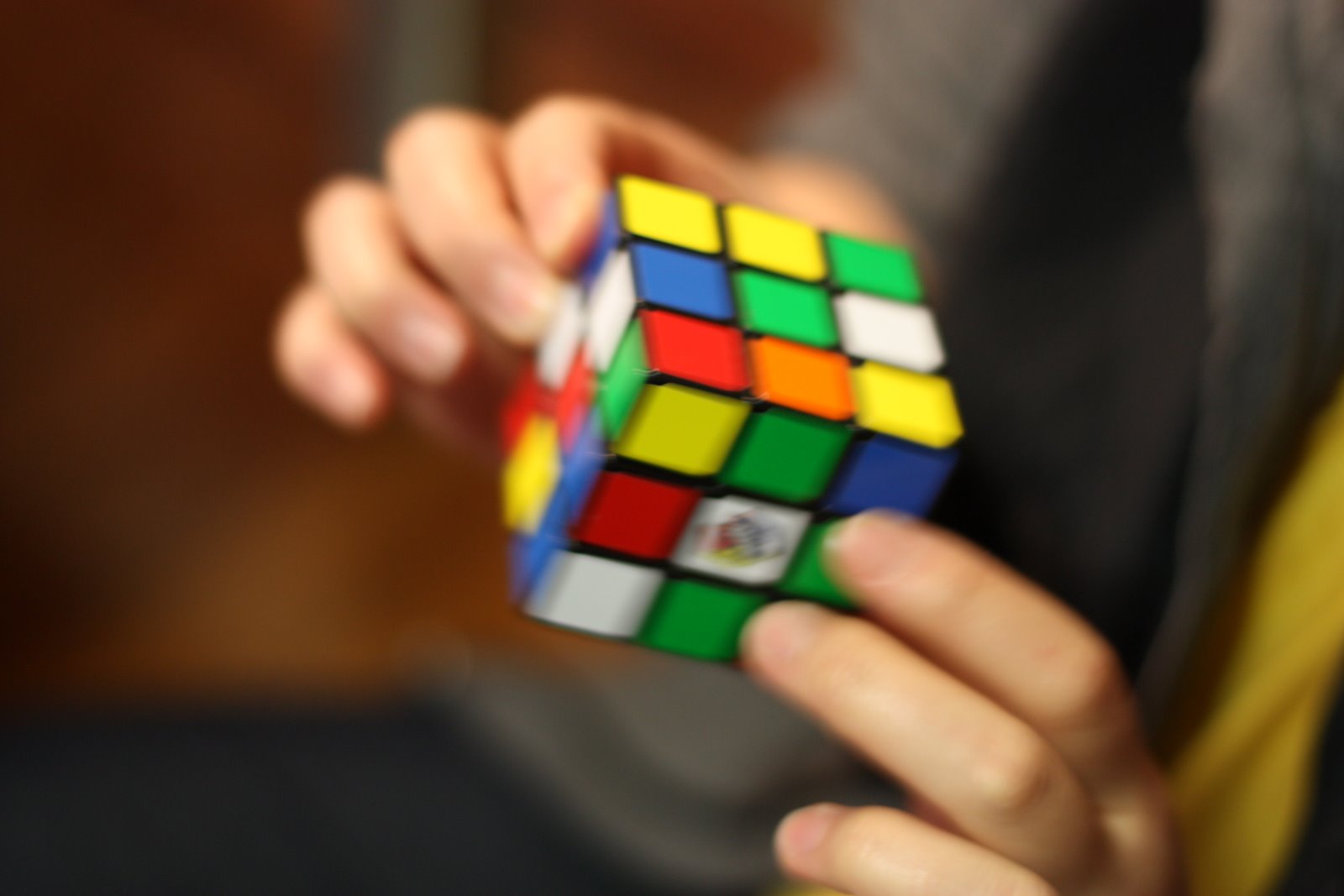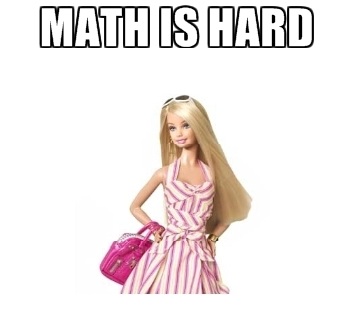It's obvious, but let's say it anyway: American schools don't teach math with the brain in mind.
The way we teach math doesn't match much of what we know about engagement, creativity, understanding, or memory.
In our last few posts, we've described two radically different methods of teaching math: the JUMP Math approach, and the "Japanese method".
Both are really quite different from each other — JUMP is super-guided, while the Japanese approach is quite unguided.
But both methods put each student in the driver's seat, forcing them to make sense of mathematical ideas themselves, rather than blindly following a textbook's method.
The trick: use them both.
But even when combined, these two methods are still (we think) not enough. Neither method helps students truly master problems: digesting them fully, ruminating on them until the mathematical ideas contained in each problem become encoded in a student's long-term memory.
For that, we have a third piece of our math curriculum: Deep Practice Books.
Deep Practice Books are a curricular invention that we've been pioneering over the last eight years, using ourselves as guinea pigs, and refining with the help of hundreds of students.
Like the Japanese teaching method, Deep Practice Books involve parachuting students into math problems they don't know how to solve, and helping them develop, on their own, the tools to solve them.
But unlike the Japanese method, a Deep Practice Book is highly personalized. It's a tool for students to develop their own mathematical brilliance.
I (Brandon) created the Deep Practice Book out of my own struggle to study for the GRE, a story I've never told in print.
So, here goes. I believe a suitably grand title is in order:
The Deep Practice Book:
A deceptively simple method anyone can follow to impressively raise a math test score and ho boy cultivate actual mathematical genius
Mostly, I avoided math in school.
I was always pretty good at math — enough that I didn’t need to particularly worry about it. But never great — and I never particularly loved it.
In fact, when I found myself bored in high school, and decided to spend a year homeschooling myself, I fell behind in math. (I did, however, learn a bit of ancient Greek, which probably has proven more useful as an adult!)
And in college, I got my one required math class out of the way as quickly as possible. I didn’t even do that well in it, earning a C+, which the instructor was merciful enough to raise to a B–.
I even avoided classes that smelled like math: physics, of course, and chemistry.
(By the way: huge mistake! Since graduating college, I’ve fallen deeply, desperately in love with science — but because I never took the time to systematically understand the periodic table, it’s difficult for me to pass beyond the scientific comprehension of someone living in the 18th century.)
So when I decided to apply to graduate schools, and needed to tackle the GRE, I knew had a challenge in store for me.
The GRE is the test to get into academic graduate school — where you can get a master’s or Ph.D. The GRE is made by the same people who make the SAT, but they make the GRE on the days when they’re feeling mad.
The math problems on the GRE deal with simple math — there’s almost nothing on it beyond basic geometry — but the questions can be devilishly complex. Take, for example, this basic-looking problem:
And here was me, who had been running away from mathematical thinking for more than five years.
My one advantage was that I was already a test-prep coach for the SAT and ACT. I loved helping other people through their math pains — so maybe I could find some fun in working through my own.
I had started off working at a tutoring center, and had gotten good enough to start working privately. I had seen some initial success — my first student had improved his SAT score 290 points and gotten into Harvard. But I had also seen some darker episodes. I had lately worked with two young women for more than half a year when something troubling happened.
We worked our way through the entire SAT book, doing more than 400 math questions.
They studied diligently!
I tutored competently!
And then, with the real test less than two months away, I bought them new copies of the same book. They re-took the first test…
…and got nearly all the same questions wrong.
We were aghast. We were forlorn.
I want to call attention, at this point in the story, to how weird this is. We seemed to be doing everything right — they were studying hard enough, and I was teaching clearly enough. And yet there was almost no change, even on precisely the same problems.
It was right around then that I decided to study for my GRE.
I took my first test, and got a 670 out of 800 in the math. Now, for the SAT, that’d be a fantastic score — somewhere around the 87th percentile. But on the GRE, it was the 48th percentile.
That means, if you randomly grabbed a hundred GRE-takers and put them in a line, with low-scorers on the left and high-scorers on the right, I’d be the 48th guy. Basically, average.
Ooch. I was a test-prep coach — this was my professional image on the line. I decided to use the blow to my pride as a motivator to study hard. I wrote up a study schedule for myself: I decided to take a half-test every Monday morning for the three months before the real deal.
And it didn’t want to repeat the tragedy that had befallen my two hard-working students.
It was at this point that I did something rather random, without understanding why I was doing it: I re-copied all the math questions I had gotten wrong on that diagnostic test into a binder. And on the cover, I wrote (in big, cocky letters) “HOW WE BEAT THE MATH.”
And I obsessed over the problems. Since they were in a special binder, it seemed natural to do so — this was my binder of Impossible Problems, my binder of pain.
Gradually, it became my binder of math love.
I didn’t just learn to solve them, I learned to explain them to myself. I made sure I didn’t write down my work or the answers in the binder (because then I wouldn’t really have been able to re-solve the problems), but whenever I had a question, I made sure to write it down:
Wait, how do you add fractions, again?
Why does the area for a trapezoid use the average of the top & bottom?
How the heck does that ugly permutation formula work?
By filling the binder with questions, and by obsessing about the answers, I learned the math so deeply I think I could have explained it to a fourth-grader.
And then, as Monday approached, I prepared to take a new half-test.
The night before the new test, I did my second oddball, I-didn’t-really-grasp-the-profundity-of-what-I-was-doing thing: I re-solved all the problems in the binder.
And was horrified when I got half of them wrong.
Remember: I had been obsessing over these problems the whole week. I had these problems down: I thought I understood them perfectly clearly.
And I got half of them wrong.
This was my first hint that human brains didn’t evolve to do GRE math. Nor did they evolve to do SAT math, or ACT math.
If I wanted to do really, really well on this test, I realized I needed to study in a fundamentally different way than twelve-plus years of schooling had prepared me to study. I needed to identify every mathematical idea I found confusing, and put it into a foolproof system that would allow me to understand it — and engrave it into my long-term memory.
Over the course of the next three months, I added problems to my binder almost religiously. And I did whatever it took to understand them — read answer explanations, pose questions, ask friends.
But all of this wouldn’t have amounted to much had I not re-solved all of them from scratch at least once each week — each and every problem I had previously entered in.
As I re-solved those problems on fresh paper, something delightful happened: I began to get them right, every time. And quickly, too! Initially I struggled with the problems, weaving back and forth inside my brain to figure out what the next step might be. But now the next steps came easily.
Before, I could only see a single step at a time — now, after re-solving the problem three or four times, I could see the whole thing at once. I could chop the problem up into tiny moves, and deal with each of those moves quickly.
And that wasn’t even the best part! About once or twice a week I would be re-solving a problem for maybe the fifth or sixth time when I’d realize that I had been an idiot. I had been solving a problem by doing a long series of steps — but if I just reconceived the problem, looked at it from a different perspective, the entire thing would be easy, could be solved in one or two moves.
Math, I realized, was simple. It was elegant. These insights were glorious — when I had them it felt like the sky was opening, and a beam of light was shining down directly on me. I could almost imagine I could hear angels singing.
And I recognized that this was why mathematicians did it — modern mathematicians, and the great mathematicians of history who had originally discovered the methods I was now uncovering myself. They were chasing the sublime high of mathematical insight.
How often, I asked myself, did I experience this in all of high school?
Maybe once or twice.
But now, studying for a standardized test — engaging in perhaps the least glamorous math learning task Western civilization has devised! — I was experiencing these epiphanies once or twice a week.
I had stumbled upon, I realized, a way of dependably building math expertise. And I was seeing it pay off: almost each week, my GRE practice test score rose. In fact, it rose quite predictably — going up about as many points as problems I had mastered in the previous week.
When I entered in 10 problems, my score went up 10–20 points.
When I entered in 20 problems, my score went up 20–40 points.
The week before I took my real test, I counted the problems I had copied into my binder — 104. And on my practice tests that week (full ones) I scored an 800 and a 790.
When I took the real GRE, I scored an 800 — a perfect score. Not bad for someone who avoided math in school.
But much better than the score was my newfound sense of myself as a mathematician. I realized that no mathematical concept was beyond me — I could understand anything, given enough time and effort. And I could enter it into a foolproof system, and, by repeatedly re-solving it, comprehend the ideas even more fully as time went by.
And I could even like it. Because to really understand something — to make sense of it inside and out, forwards and backwards — is sweet, and worth the struggle to achieve it.
Over the years since then, I’ve helped hundreds of students build their own collections of impossible problems — “magical math binders”, as one of my students has dubbed them, or “deep practice books”, as I call them.
And in a few posts to follow, I’d like to help you build and maintain your own — if you've the hankering to fall in love with math, too.












 The thing is, this is actually true — for all genders.
The thing is, this is actually true — for all genders. Ours can be a school of mastery.
Ours can be a school of mastery.